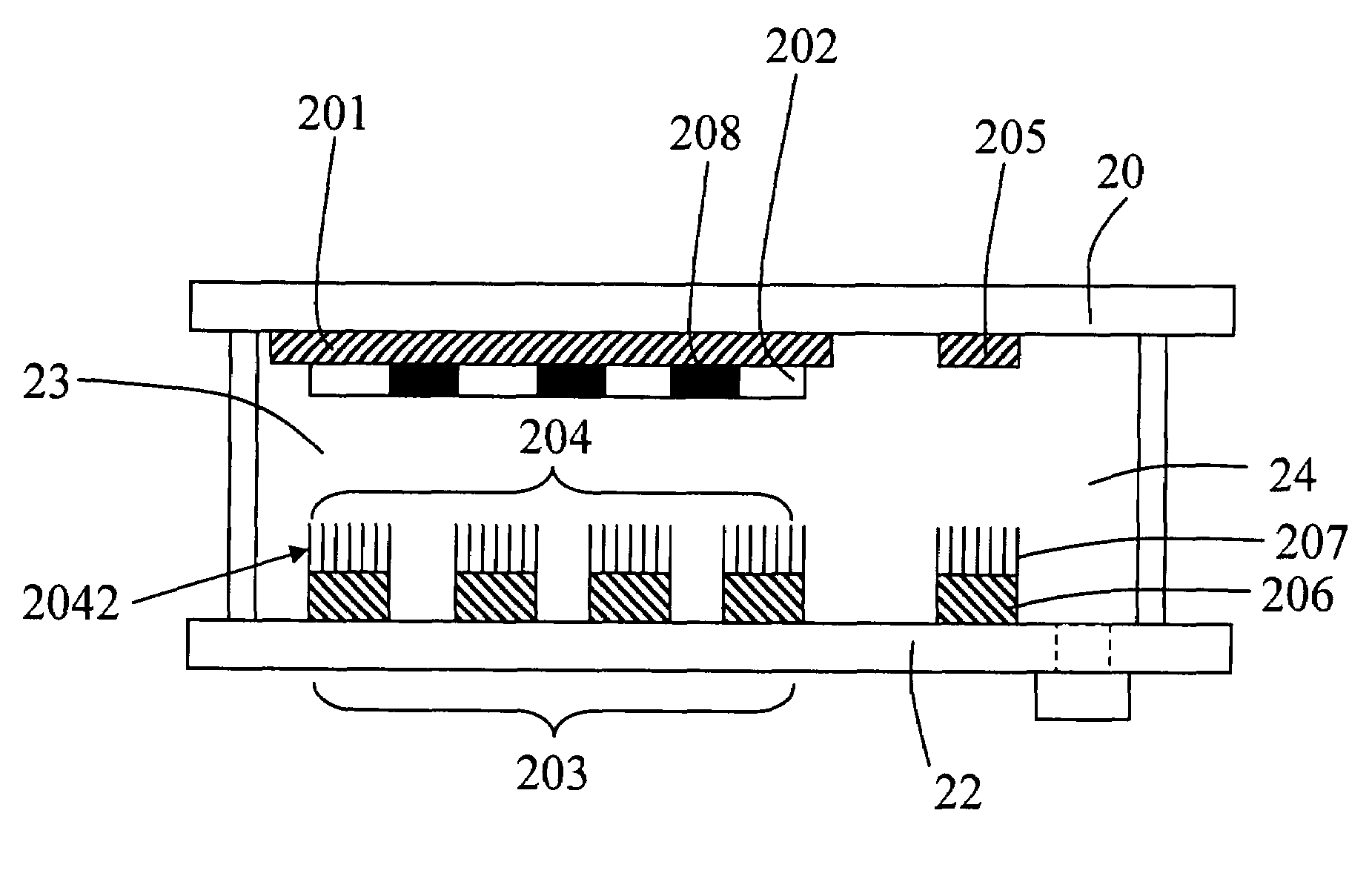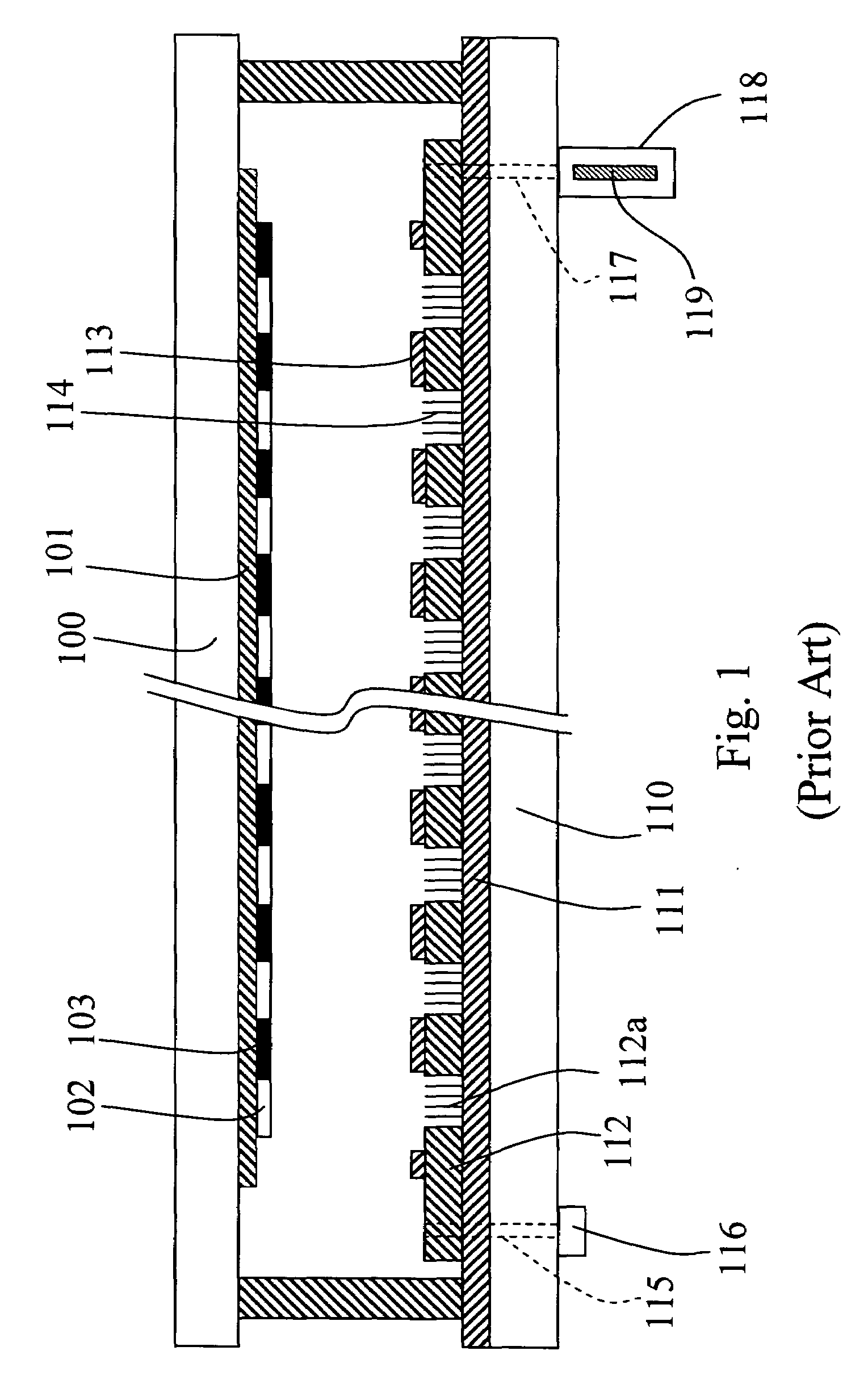Field emission system and method for improving its vacuum
a field emission system and vacuum technology, applied in the direction of discharge tube/lamp details, discharge tube main electrodes, discharge tubes luminescnet screens, etc., can solve the problems of reducing the field emission performance caused by ion bombardment, the shape of the emitter tip gradually deteriorates, and the decrease of the field emission performance almost unavoidable, so as to facilitate mass production of field emission display devices, reduce the effect of fabricating cost and reducing the thickness and weight of the system
- Summary
- Abstract
- Description
- Claims
- Application Information
AI Technical Summary
Benefits of technology
Problems solved by technology
Method used
Image
Examples
first embodiment
[0025]Before sealing the panel of the field emission display of the first embodiment, the aging process is performed unto the carbon nanotube units 2042 in the display area 23 and the carbon nanotubes 207 in the getter area 24 such that the gases bonding to the surfaces of the carbon nanotubes and accumulated in the interstices of the stacking carbon nanotubes are released, and the carbon nanotubes 207 in the getter area 24 become surface-unsaturated absorbing material. The residual gas within the system is exhausted by a vacuum system, and then the panel is sealed. While the field emission display is operated, voltage is not applied to the second anode wire 205 and the second cathode wire 206 of the getter area 24. As such, the carbon nanotubes 207 are only functioned as getter agent but do not provide field emission.
[0026]In addition, the surface-unsaturated carbon nanotubes also can be formed on other non-display areas such as the inner surface areas of the lower substrate 22 cor...
third embodiment
[0029]Similarly, before sealing the panel of the field emission display device of the third embodiment, the aging process is performed unto the carbon nanotube units 305 in the display area 33 and the carbon nanotubes 309 in the getter area 34 such that the gases bonding to the surfaces of the carbon nanotubes and accumulated in the interstices of the stacking carbon nanotubes are released, and the carbon nanotubes 309 in the getter area 34 become surface-unsaturated absorbing material. The residual gas within the system is exhausted by the vacuum system, and then the panel is sealed. While the field emission display device is operated, the voltage is not applied to the second anode wire 307 and the second cathode wire 308 of the getter area 34. Thus, the carbon nanotubes 309 are only functioned as getter agent but do not provide field emission. Alternatively, the carbon nanotubes 309 in the getter area 34 also can grow on the second anode wire 307.
[0030]The geometric shape of the g...
PUM
 Login to View More
Login to View More Abstract
Description
Claims
Application Information
 Login to View More
Login to View More - R&D
- Intellectual Property
- Life Sciences
- Materials
- Tech Scout
- Unparalleled Data Quality
- Higher Quality Content
- 60% Fewer Hallucinations
Browse by: Latest US Patents, China's latest patents, Technical Efficacy Thesaurus, Application Domain, Technology Topic, Popular Technical Reports.
© 2025 PatSnap. All rights reserved.Legal|Privacy policy|Modern Slavery Act Transparency Statement|Sitemap|About US| Contact US: help@patsnap.com



